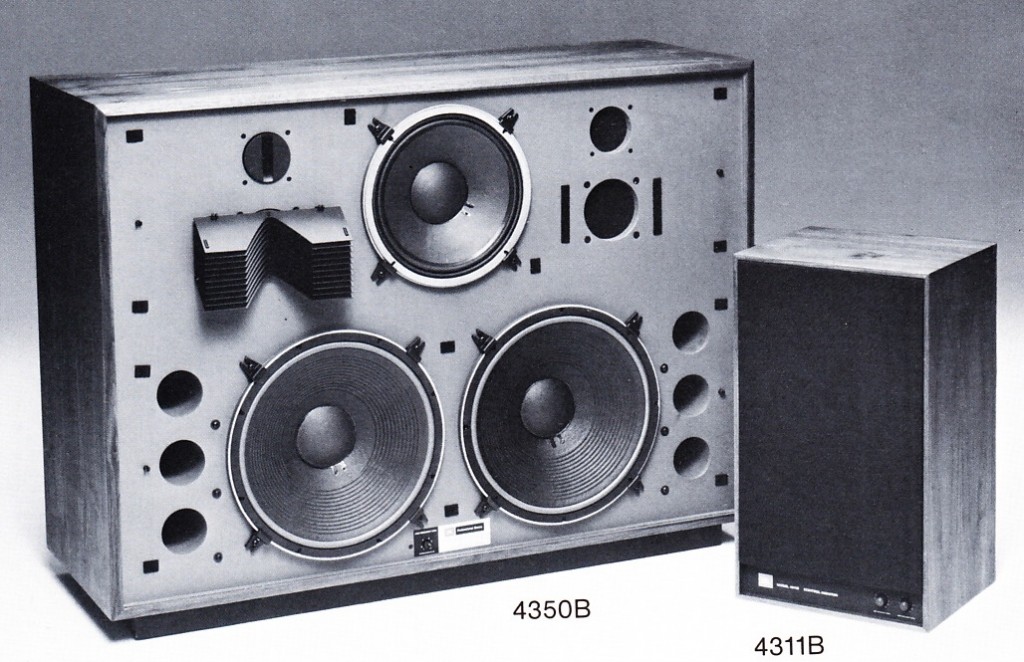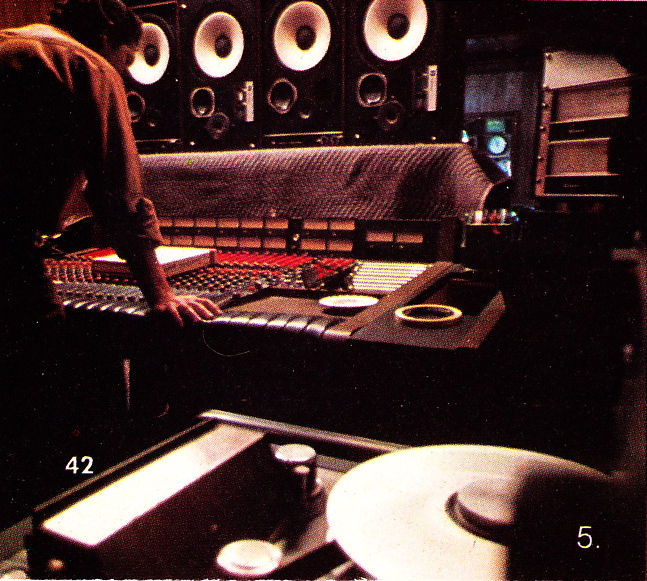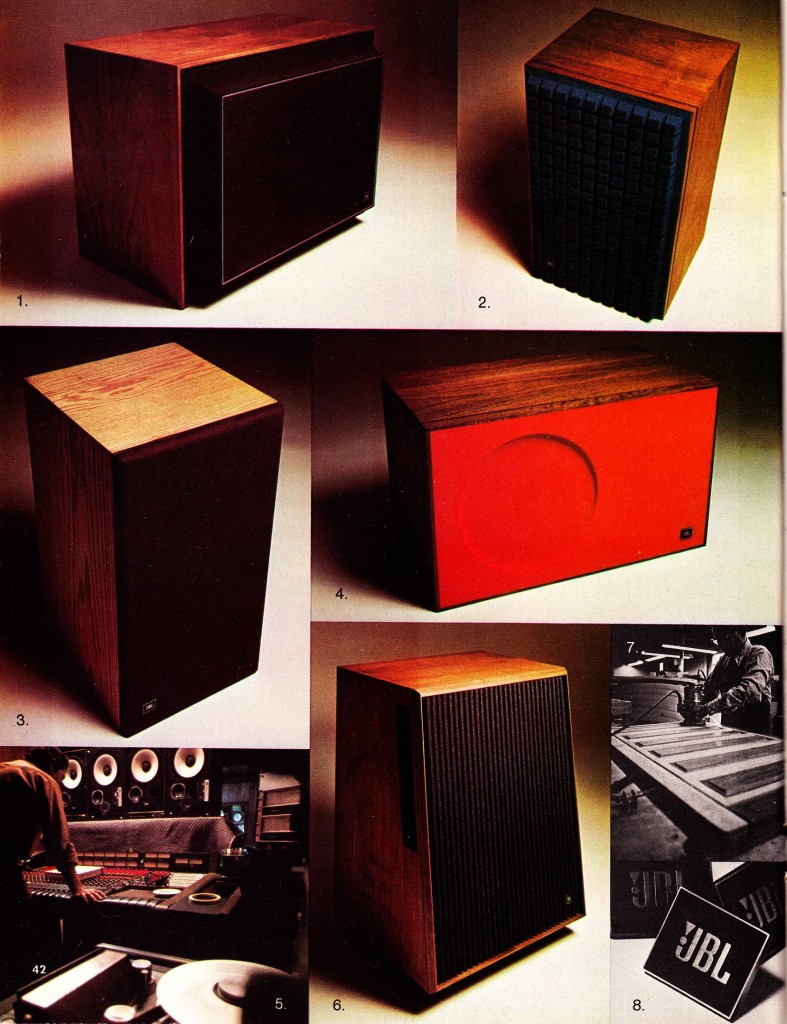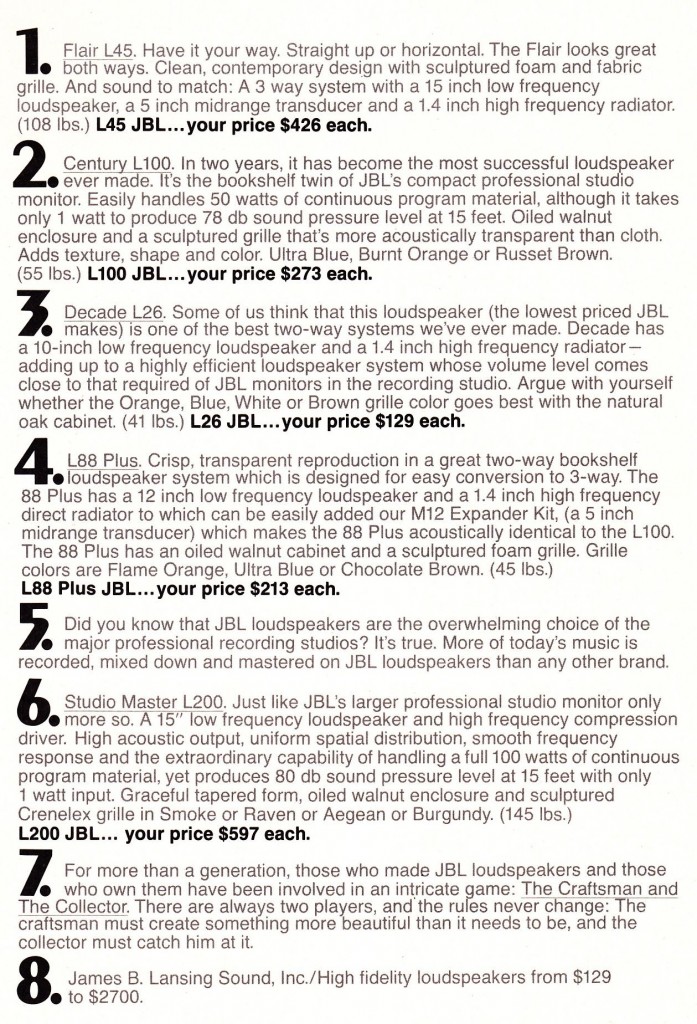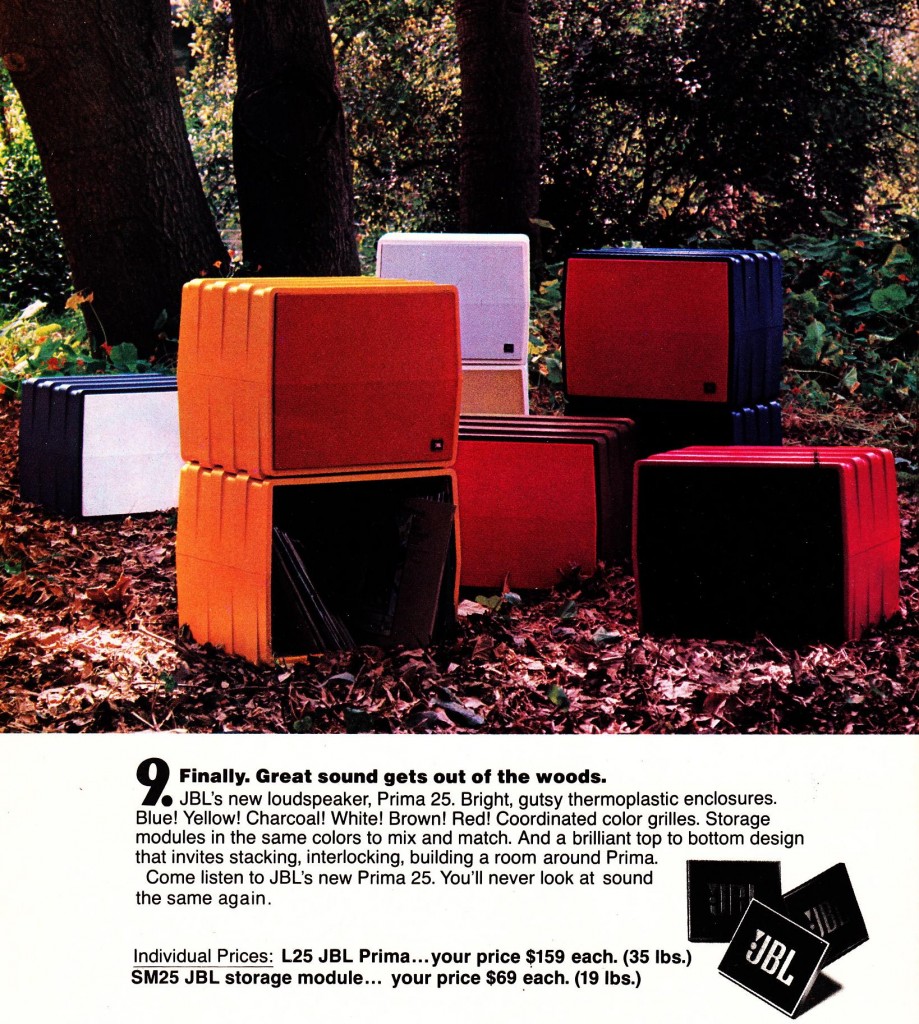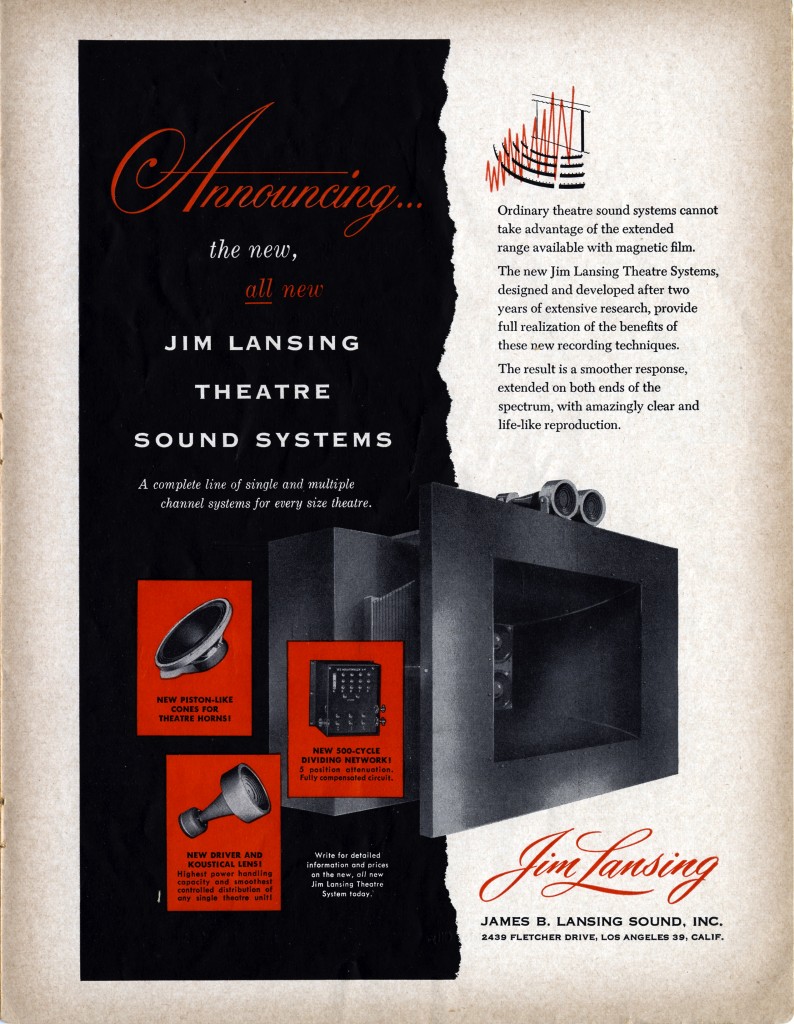 Today: some random bits+bobs of Sound-For-Film technology of the early 1950s. Above: the All-New JBL Theatre Sound Systems, which claim to offer the higher-fidelity needed to properly reproduce the newly-available magnetic soundtracks that were being used in 35mm film at the time. Prior to the introduction of magnetic 35mm film soundtracks in the 1950s, all film-sound was reproduced in theaters via an optical sound-track which ran alongside the edge of the film-frames. Fidelity was limited, although I cannot say exactly to what frequency range. Can anyone tell us what the first feature-film was to be exhibited nationwide with a magnetic soundtrack?
Today: some random bits+bobs of Sound-For-Film technology of the early 1950s. Above: the All-New JBL Theatre Sound Systems, which claim to offer the higher-fidelity needed to properly reproduce the newly-available magnetic soundtracks that were being used in 35mm film at the time. Prior to the introduction of magnetic 35mm film soundtracks in the 1950s, all film-sound was reproduced in theaters via an optical sound-track which ran alongside the edge of the film-frames. Fidelity was limited, although I cannot say exactly to what frequency range. Can anyone tell us what the first feature-film was to be exhibited nationwide with a magnetic soundtrack?
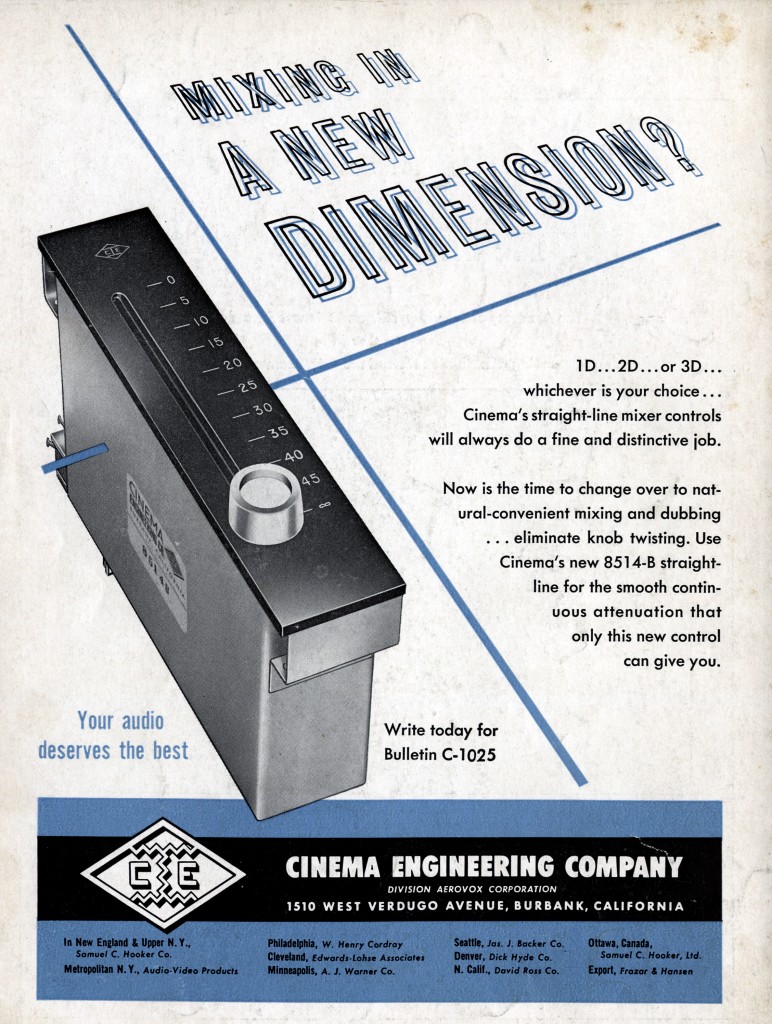
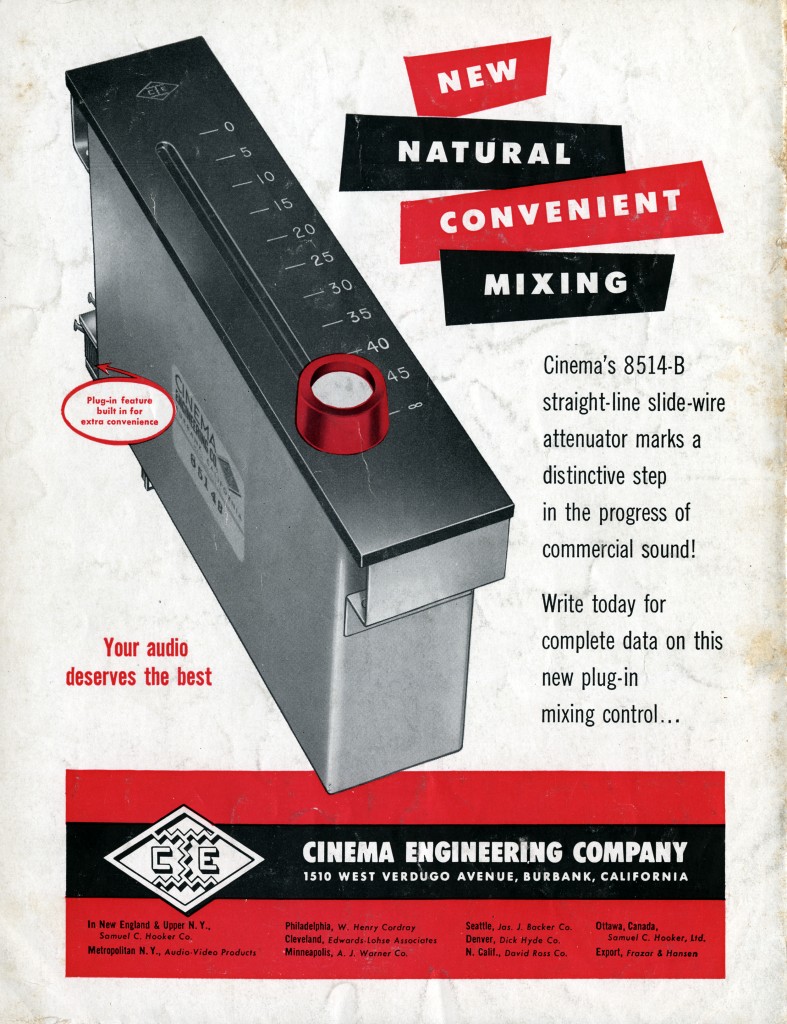
Above: Cinema Engineering presents… the fader! Straight-line attenuators have certain advantages over rotary controls, such as quicker visual feedback and a range of motion that better correlates with human bio-mechanical consideration. Nonetheless, rotary faders remained in use in pro audio well into the late 60s. Does anyone know who first patented and/or marketed the linear fader?
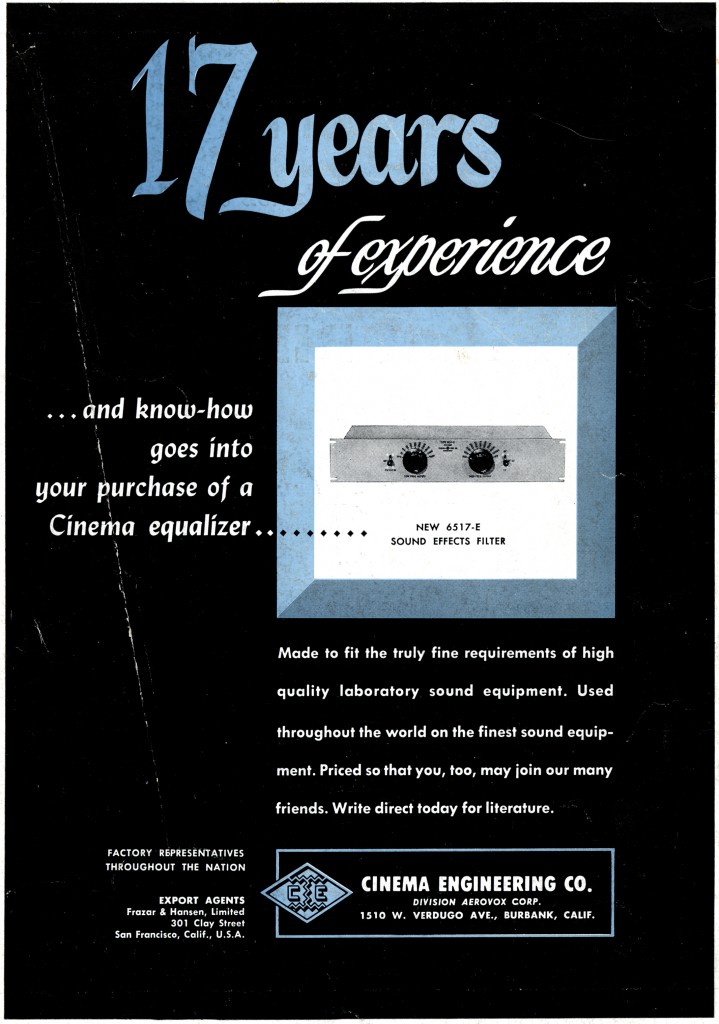 Above: the Cinema Engineering 6517-E ‘Sound Effects Filter,’ aka a high-pass and a low-pass filter both built into a single instrument. I could find this sort of thing very useful; especially for tracking multiple ‘stacked’ parts such as one singer delivering 7 vocal harmonies over a single phrase, as I found myself doing in a session earlier this week. Just carve out all of the unnecessary super-high and super-low end… the 80 or 100 hz high-pass filter built into many mic preamps is certainly useful but it’s obvs not always the best cut off choice.
Above: the Cinema Engineering 6517-E ‘Sound Effects Filter,’ aka a high-pass and a low-pass filter both built into a single instrument. I could find this sort of thing very useful; especially for tracking multiple ‘stacked’ parts such as one singer delivering 7 vocal harmonies over a single phrase, as I found myself doing in a session earlier this week. Just carve out all of the unnecessary super-high and super-low end… the 80 or 100 hz high-pass filter built into many mic preamps is certainly useful but it’s obvs not always the best cut off choice.
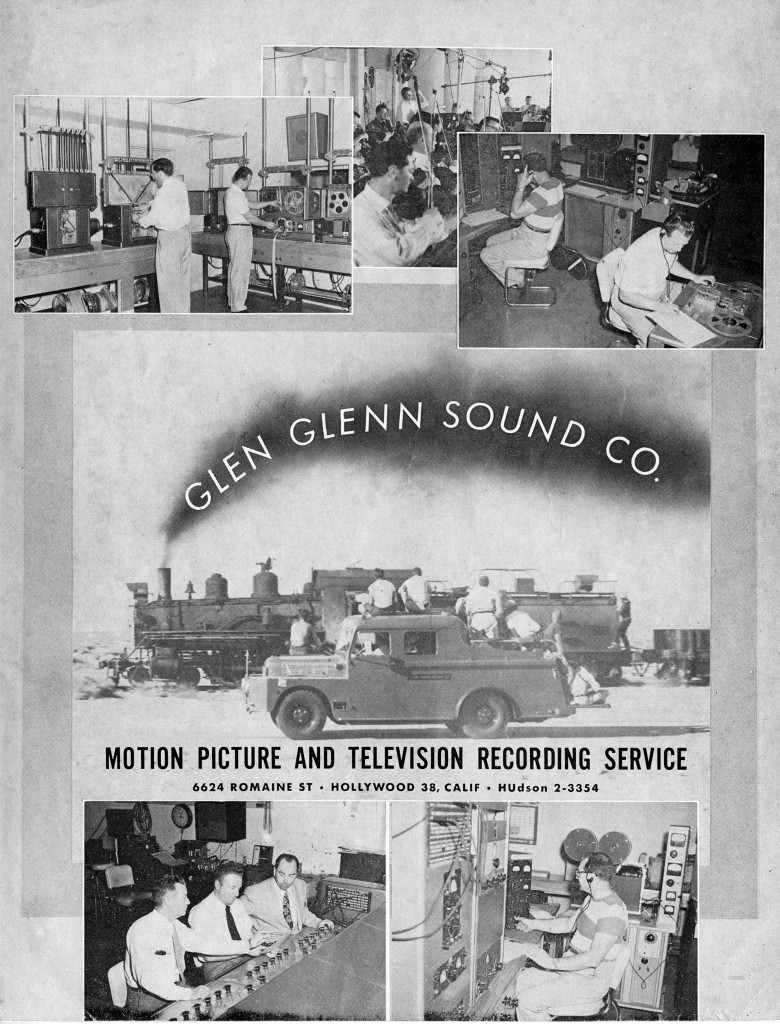 Above: an advert for Glen Glenn Motion Picture Sound Co. circa 1953. Anyone out there work for this firm? We’d love to hear yr stories…. drop us a line…
Above: an advert for Glen Glenn Motion Picture Sound Co. circa 1953. Anyone out there work for this firm? We’d love to hear yr stories…. drop us a line…
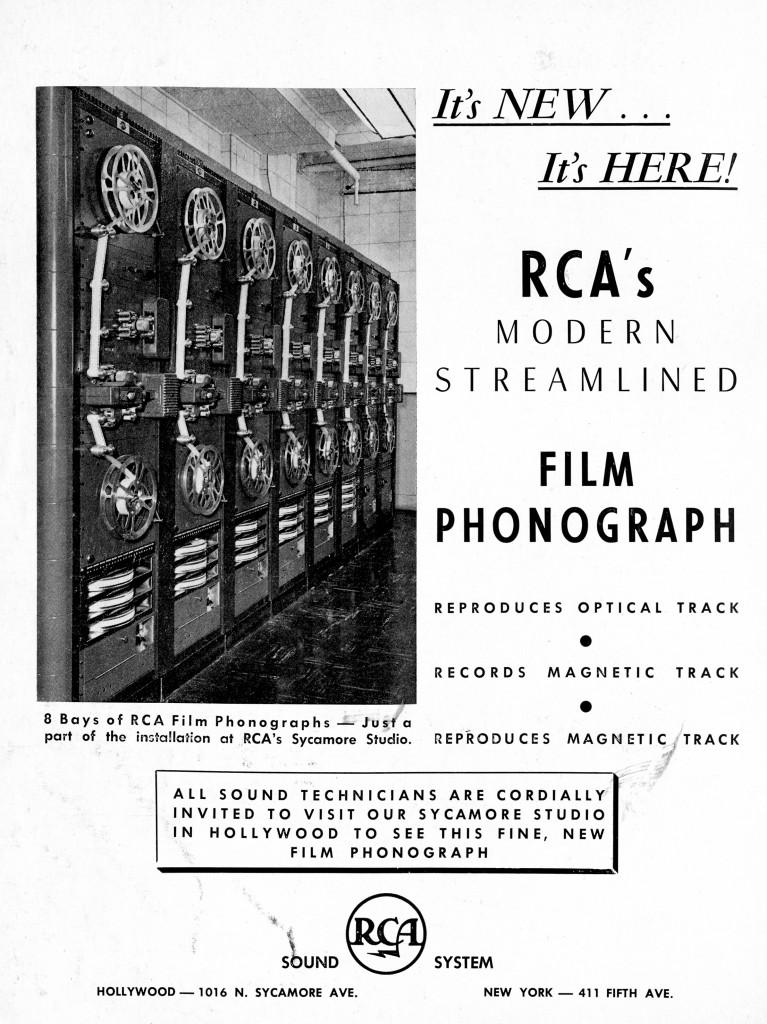 Above: RCA’s ‘film phonograph,’ an apparatus that records and plays-back 35 mm magnetic sound-tracks and plays-back 35mm optical sound tracks as well. I ended up with a couple of 16mm sound track readers at Gold Coast Recorders; not sure what to do with them. Has anyone had any luck converting an optical-track reader into a signal processing or signal generating device? Seems like there’s some potential to make it into interesting experimental instrument; strobe-light-controlled oscillator perhaps?
Above: RCA’s ‘film phonograph,’ an apparatus that records and plays-back 35 mm magnetic sound-tracks and plays-back 35mm optical sound tracks as well. I ended up with a couple of 16mm sound track readers at Gold Coast Recorders; not sure what to do with them. Has anyone had any luck converting an optical-track reader into a signal processing or signal generating device? Seems like there’s some potential to make it into interesting experimental instrument; strobe-light-controlled oscillator perhaps?
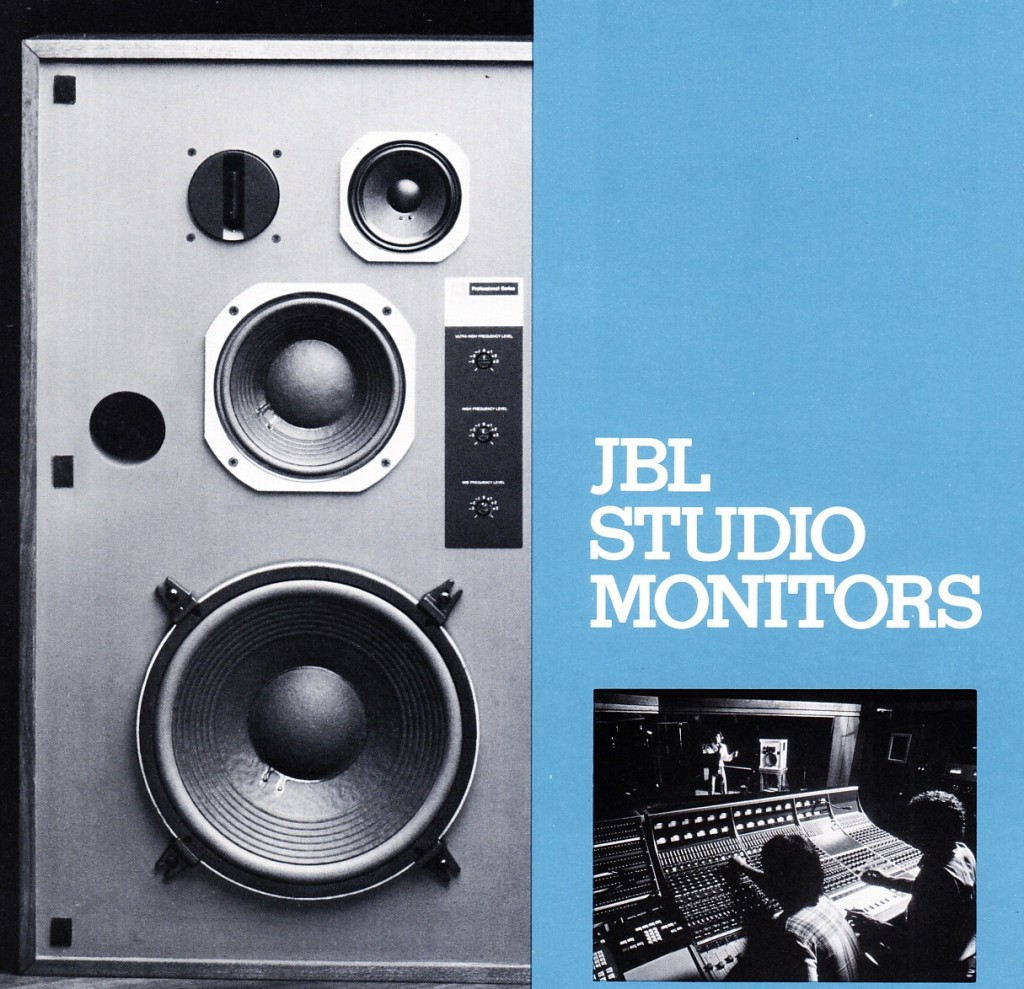 Download the 6pp 1980 JBL ‘Studio Monitors’ catalog:
Download the 6pp 1980 JBL ‘Studio Monitors’ catalog: